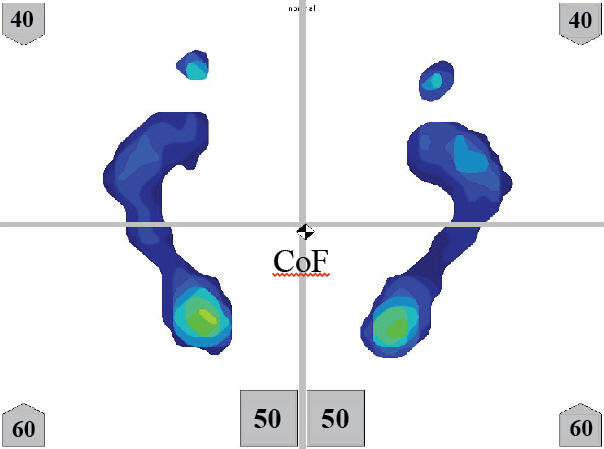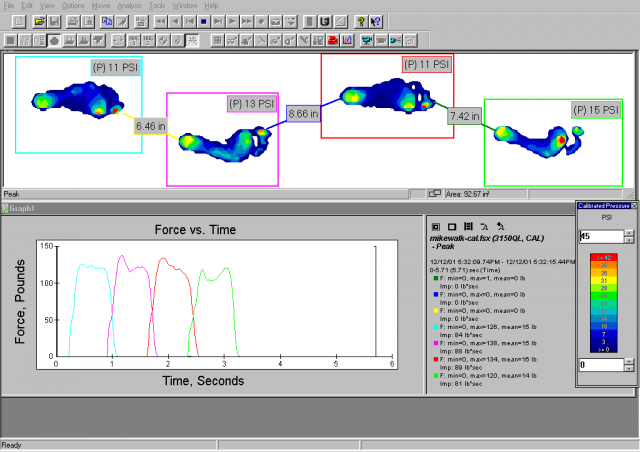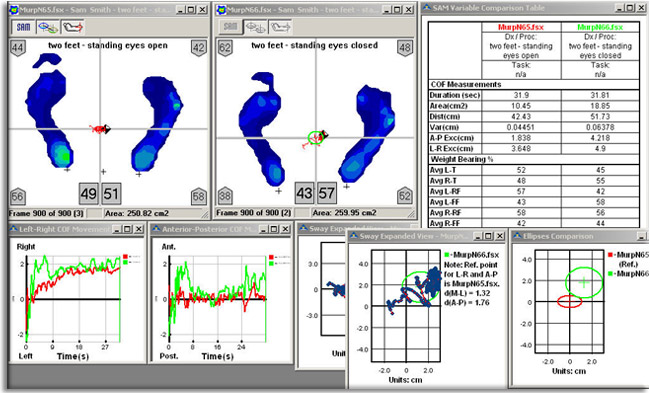Gait analysis is undertaken to assess the way in which you walk, run and move. This helps us identify any possible pathological (injury inducing) loading patterns. The analysis is combined with static weight bearing and non weight bearing assessment data to create a picture of your function. The latest state of the art equipment is used to gain as much information as possible.
Video Analysis
Standard and high-speed video analysis is used to best replicate your usual function. This may include walking, running, jumping, sqauting etc. This is called a kinematic assessment and is more a description of movement.
Tekscan® Matscan ™
 We sometimes use pressure data to assess load on the bottom of the foot. This helps in identifying forces acting on the bottom of the foot which can lead to overload.
We sometimes use pressure data to assess load on the bottom of the foot. This helps in identifying forces acting on the bottom of the foot which can lead to overload.

Tekscan® Walkway ™

 This state of the art gait analysis equipment is the only one of its kind in private practice in the country. It measures both pressures acting on the bottom of the foot as well as the parameters of gait such as step length, step time, step velocity etc.
This state of the art gait analysis equipment is the only one of its kind in private practice in the country. It measures both pressures acting on the bottom of the foot as well as the parameters of gait such as step length, step time, step velocity etc.
This provides invaluable data as it can highlight asymmetries in gait that are very difficult to see with conventional gait analysis.One of the advantages of the system is the provision of data in the initial stages of rehabilitation which can be compared to data obtained during and post rehab to ensure the best possible outcomes.
Please note that Tekscan ® Walkway™ measurements are taken off site at our Gait Laboratory on Finchley Road in Temple Fortune.
SAM (sway analysis module)
 The parameters provided by SAM are used to assess and treat instability, proprioreceptor and sensorimotor systems dysfunction, and posture and balance disorders’ . Poor proprioception and balance can influence ones ability to cope with load. SAM allows us to see the differences between sides and also compensations on the same side. Several tests are conducted such as standing with eyes open compared to eyes closed or doing set tasks like standing on one leg or doing squats.
The parameters provided by SAM are used to assess and treat instability, proprioreceptor and sensorimotor systems dysfunction, and posture and balance disorders’ . Poor proprioception and balance can influence ones ability to cope with load. SAM allows us to see the differences between sides and also compensations on the same side. Several tests are conducted such as standing with eyes open compared to eyes closed or doing set tasks like standing on one leg or doing squats.
This data can then be compared to Data obtained at a later date to ensure outcome measures are met.